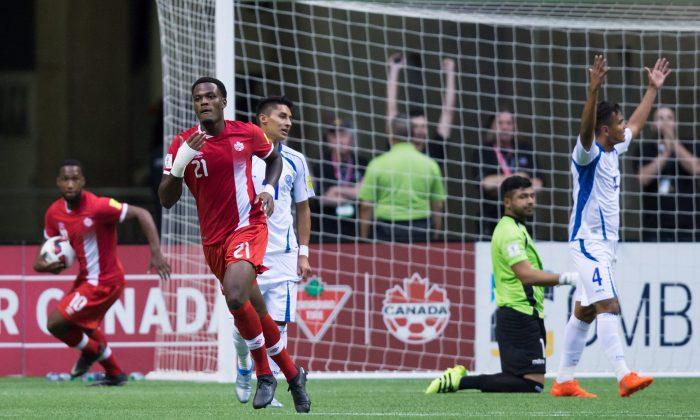It was probably irrational hope, but it didn’t have to end the way it did.
Once again, Canada’s men’s national soccer team will not qualify for the next World Cup, to be held in Russia in 2018. It failed to reach the final stage of World Cup qualification—known as the “Hex” after a disappointing night in Vancouver on Tuesday, Sept. 6.
Canada needed a big win over El Salvador and lots of help from Mexico—essentially a miracle. It got neither. Canada’s last semifinal game ended with a 3–1 win over El Salvador, but Mexico, who had already qualified for the Hex, was held to a scoreless draw by Honduras.
So it’s back to the drawing board for the next World Cup—a familiar place for Canada. It’s the bitter end to a qualification campaign that started brightly in a difficult group.
The elephant in the room is head coach Benito Floro’s in-game and squad management. The 64-year-old Spaniard, who took over in 2013, simply didn’t get the best out of the squad and an improved Canada is left wondering what could have been.
Lost It in Honduras
Canada’s fate was essentially sealed after the Sept. 2 loss in Honduras. The 2–1 loss meant Canada would have to overcome a five-goal differential in beating El Salvador, while counting on Mexico to defeat Honduras.
In Honduras, Canada’s defensive structure and fitness let them down. Manjrekar James gave Canada the lead, but Honduras equalized just before halftime.
In the second half, the Hondurans turned up the heat in San Pedro Sula and Canada wilted.
“We just needed to shut up shop in the first 10-15 minutes of the second half and we weren’t able to do so,” David Edgar told reporters after the loss to Honduras.
Floro took out striker Cyle Larin in favour of defender Nik Ledgerwoord, ostensibly in a damage control move. But it was puzzling given that Canada needed to push for the draw. In the end, Honduras won by one goal, but it could have been by a wider margin.
Goalscoring has long been an issue under Floro. Last July’s Gold Cup saw Canada exit without scoring a goal in three games against El Salvador, Jamaica, and Costa Rica.
Entering the match against El Salvador, Canada had scored just two goals in the five World Cup qualification semifinal round games. Canada’s strikers surely feel they can do better.
Against El Salvador, Canada showed that it can attack and create chances, albeit against weaker opposition. One wonders where the attack-minded performance on display in Vancouver was in El Salvador last fall.
The results will show that Canada made a bit of progress from 2012. This Canadian men’s national team is stronger than the one that failed to qualify four years ago—especially when considering players left off the squad.
But what disappoints is the sense that Canada might have had enough to qualify for the Hex.
It doesn’t seem like Floro made the best use of the players at his disposal. His decisions have been and will continue to be questioned.
Toronto FC midfielder Jonathan Osorio was shut out of the squad and former MLS Cup winner Will Johnson was not chosen for the final two matches despite being fit and in-form.
Floro also used players in different positions than the ones they play in with their clubs. Against Honduras, Edgar was played as a midfielder instead of a central defender and Doneil Henry as a fullback instead of a central defender.
His substitutions against El Salvador were also head scratchers—Marcus Haber for Larin and Edgar for David Hoilett. In both cases, a stronger attacking threat is replaced with a weaker one when Canada needed to score goals.
Preparing for 2022
The good news is young Canadian talent has more options than it did four years ago as academies develop with Toronto FC, Montreal Impact, and Vancouver Whitecaps.
But there will be some big shoes to fill as well. Next time around, Canada will go it without Atiba Hutchinson, 33, their four-time player of the year.
Qualifying for the Hex requires playing in oppressive conditions in Central America. In both the 2012 and 2016 trips to Honduras, Canada wilted in the heat. Last Friday’s game-time temperature was 34C, but it felt like 47C with the humidity.
To reach the Hex, Canada has to be better than teams like Honduras and Guatemala, etc. mentally and physically. This should be achievable. And it begins with the right head coach.
Canada likely has sufficient talent to reach the Hex and it should continue to improve. The right coach has to get the most out of it. And from there, it would be a wonderful battle for a place in the World Cup.
Follow Rahul on Twitter @RV_ETSports





